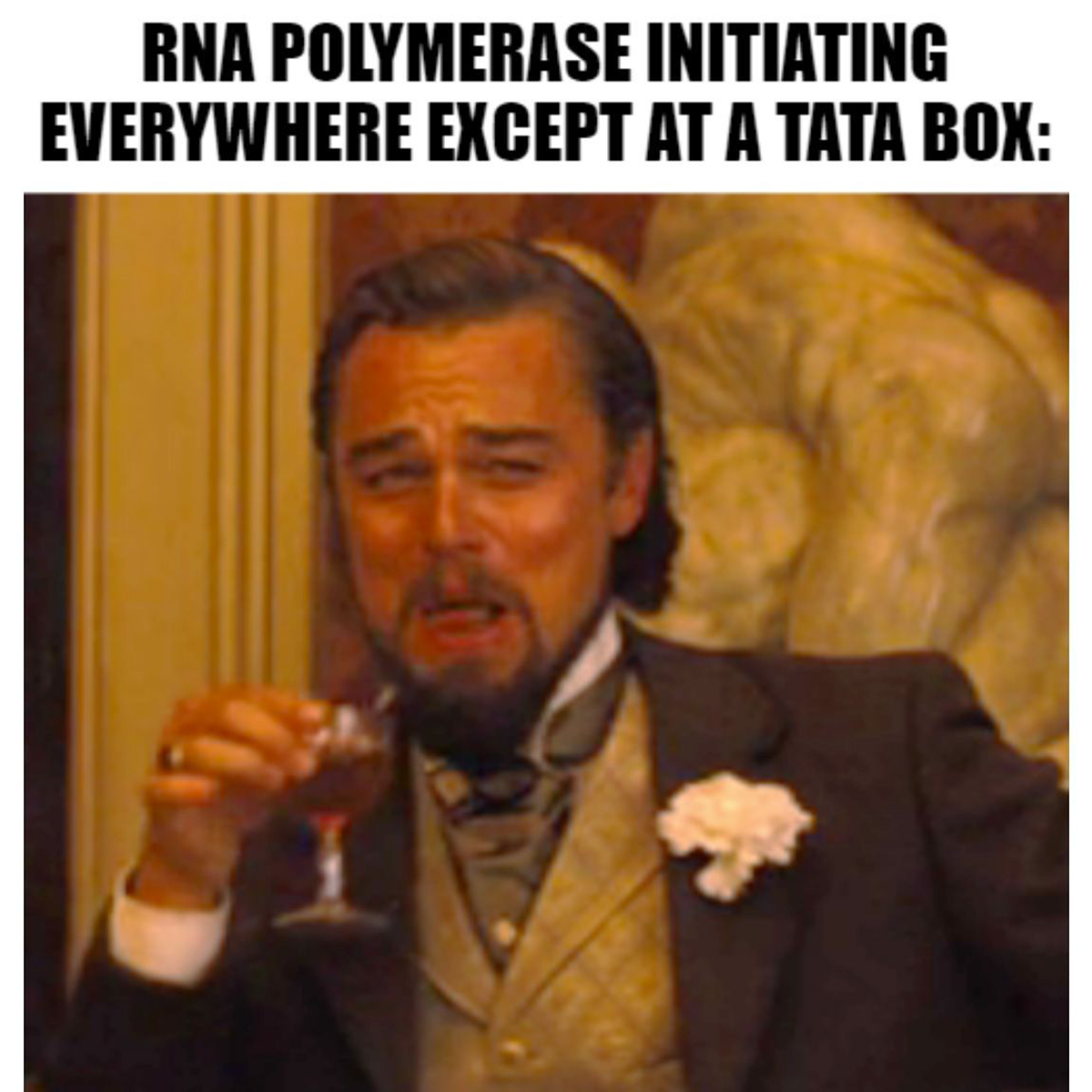If you thought enhancers and promoters were easy, think again!
And now for something (not so) straightforward: Enhancers and Promoters

One of the most basic concepts we learn in Biology 101 is that enhancers and promoters are responsible for turning DNA into RNA.
This is called DNA transcription.
At the most basic level, it requires the recruitment of RNA polymerase to DNA.
Luckily, RNA polymerases are attracted to a specific sequence in DNA:
The TATA box!
This is a sequence found within the ‘core promoter’ and the most common ‘consensus’ sequence is TATA(A/T)A(A/T).
It is recognized and bound by TATA Binding Protein (TBP).
And TBP is what actually attracts the polymerase to the promoter.
Once the polymerase sits down, transcription is ‘initiated’ and ultimately leads to the production of RNA.
That RNA is then translated into protein.
However, sometimes the promoter is hard to find, and this is where enhancers come in!
Enhancers are sequences that work at a distance (not really, but we’ll get to that) and attract a dog pile of other proteins called transcription factors.
These transcription factor bound enhancers act as little light houses that scream, “Hey, over here, dummy!”
And this allows the polymerase to find the promoter and start transcription!
But, what if I told you that 85% of human promoters don’t have a TATA box?
Unfortunately, the advent of genome-wide techniques showed us that things aren’t so simple!
Using techniques like Chromatin Immunoprecipitation (ChIP) we pulled RNA polymerases and their transcription factor friends out of solution with antibodies and sequenced the DNA that they were stuck to.
85% of the time, those sequences DIDN’T include a TATA-box.
Wild.
We also learned that enhancers actually don’t act at a distance!
They are brought very close to the promoters they assist through the actions of proteins that modify the structure of our chromosomes!
We figured this out through another genome-wide method, Chromosome Conformation Capture, that allowed us to look at what parts of chromosomes touched one another.
That, combined with ChIP, showed us that chromosomes form ‘loops,’ and those loops often work together with transcription factors to bring enhancers and promoters together to initiate transcription.
But wait, there’s more!
We also discovered that transcription is quite promiscuous.
The simple Biology 101 description says that RNA polymerase turns DNA into RNA for the sole purpose of translating it into protein.
But, as we’ve learned, NOTHING in biology is ever simple.
RNA polymerases actually transcribe whatever they can sit on.
And within this enhancer-promoter (E-P) complex, there’s a lot of DNA to sit on!
So, we get RNA from the DNA around enhancers (eRNA).
And also RNA from the complementary DNA strand, (upstream antisense RNA - uaRNA).
The purpose of these RNAs is debatable but it’s thought that all of this activity prevents the E-P complexes from getting turned off.
See, like I said, it's (not so) straightforward!
